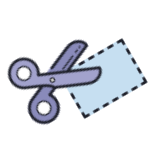szukalski
Well-known member
I’ll use existing schematic symbols but I made the footprints myself. It’s more work but makes me happier with the end result.Did you build the library from scratch or modify existing footprints?

I’ll use existing schematic symbols but I made the footprints myself. It’s more work but makes me happier with the end result.Did you build the library from scratch or modify existing footprints?
You can assign a footprint to a symbol in your library and then it’ll be done automatically. A bit of work to setup but then your layout process gets a lot faster.I hated building the schematic and then assigning footprint to each component in kicad before moving on to the board layout. I found it much more intuitive in diptrace. Now that I've got the hang of diptrace, maybe I'll try kicad again

At least not too bad and you could correct everything !Affordable prototyping = affordable mistakes = many lessons learned for $12.
That sounds cool !*Despite my mistakes, the circuit, Aleph Null's Peacock Parallel Fuzz is in-tact, functional and sounds absolutely fantastic in all of its' permutations!
You can define label positioning in a footprint in diptrace FWIW. Add text, right click it and select from the “show” menu. You’ll need to briefly populate refdes and value as you do it. This is how DT suggested doing bottom layer refdes labels and while that doesn’t work, it does let you nail label positions ahead of timeStill playing around but a major benefit is the footprints let you define labels a lot easier. I always hated messing around with that at the end of a layout.
Affordable prototyping = affordable mistakes = many lessons learned for $12.

-I used a film cap footprint for one of the electrolyticsit's installed on the under-side of the board.
-One of the gangs on the footswitch daughter-boards is upside-downI had to switch some wires around.
-LED daughter-board from my first PCB order is more borked than I care to explainbut I made it work.
*Despite my mistakes, the circuit, Aleph Null's Peacock Parallel Fuzz is in-tact, functional and sounds absolutely fantastic in all of its' permutations!
Updated boards are in production- if you're interested, keep an eye out in the 'PIF' section in a week or two.

You can also do it via a BOM sheet and it’s a good way to make sure each symbol has a corresponding footprint. I’m not at my computer right now, but I can show how to do it later. There’s a button up in the toolbar specifically for it.You can assign a footprint to a symbol in your library and then it’ll be done automatically. A bit of work to setup but then your layout process gets a lot faster.






It is quite funny, I have recently made a universal relay switching module for confined spaces where you can't fit a big momentary switch, such as in your effects. It uses an MCU and a hall sensor to sense the foot actuator. I am testing it now on 3 of your pedals but it can be used on any pedal that uses the standard @PedalPCB footswitch pattern. I plan to write a few words about it soon.I've decided I want to start moving my "production" pedals over to microcontroller-based relay switching with optocoupler muting to reduce pops on switching, so I started with the one pedal I didn't think it would fit on, the only thing I make that has a pair of tubes in a 125B. It took about 8x my average time to route, but I made it work.
View attachment 74062
Oh cool, I actually did something similar-ish but with a momentary 3PDT for a direct drop-in for my builds, kind of as a proof of concept. I don't really like the momentary 3PDTs as they still have a rather stiff click to them. Very interested to hear how the hall effect sensor goes.It is quite funny, I have recently made a universal relay switching module for confined spaces where you can't fit a big momentary switch, such as in your effects. It uses an MCU and a hall sensor to sense the foot actuator. I am testing it now on 3 of your pedals but it can be used on any pedal that uses the standard @PedalPCB footswitch pattern. I plan to write a few words about it soon.



